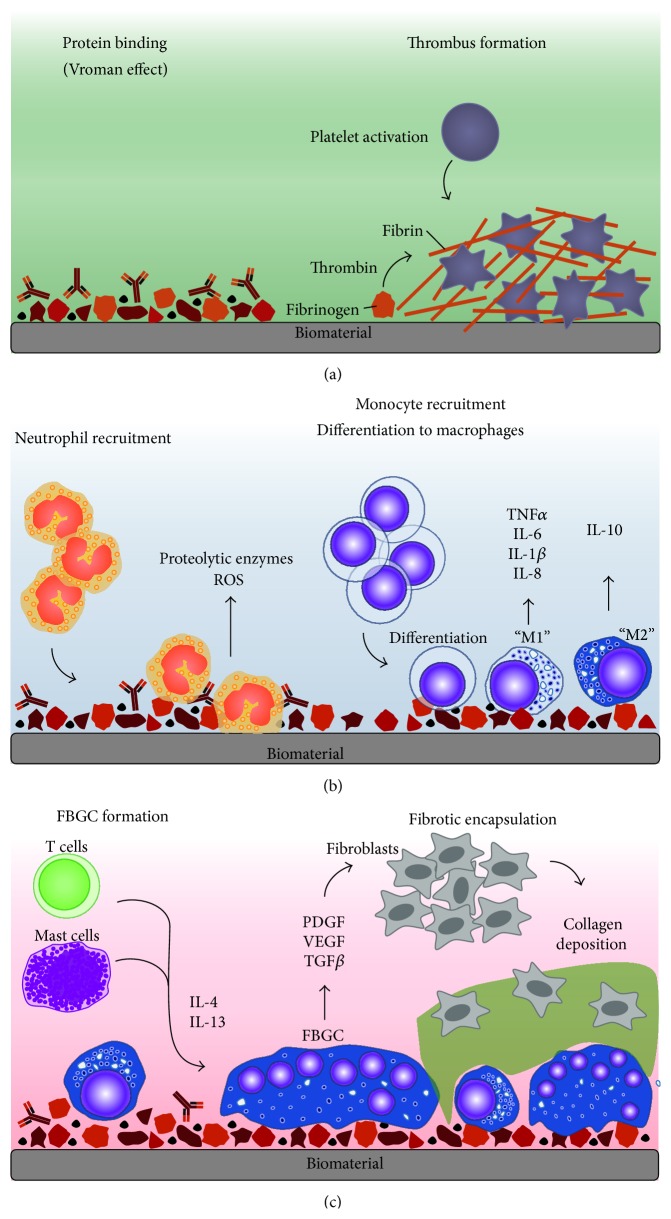Figure 1.
Foreign body response to biomaterials. The foreign body response is an acute inflammatory reaction which overlaps with tissue vascularisation and remodelling and ultimately fibrotic encapsulation. (a) Upon implantation, blood proteins are immediately adsorbed and instigate the formation of a thrombus, which acts as a provisional matrix rich in factors that recruit innate leukocytes. (b) Neutrophils are recruited to the site of implantation and attempt to degrade the biomaterial. Monocytes are also recruited and mature into macrophages, which undergo differentiation from an M1 and M2 phenotype and ultimately exhaust their phagocytic capacity. (c) Adaptive leukocytes, such as T cells and mast cells, are recruited and secrete cytokines that encourage foreign body giant cell (FBGC) formation. Fibroblast recruiting factors are secreted by FBGCs and result in their activation and collagen deposition, ultimately forming a capsule around the biomaterial to prevent further interaction with the host tissue.

